4-Day Defensive Handgun Revolver Perspective
Front Sight Course Review
Robert H.
-
4-Day Defensive Handgun (Revolver Perspective)
- Student: Robert H.
- Occupation: N/A
- Weapon: N/A
- Rounds Fired: N/A
- Number Course Taken: N/A
- Student Rating: N/A
- Course: Front Sight
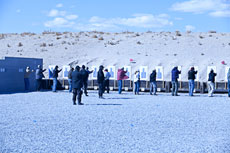
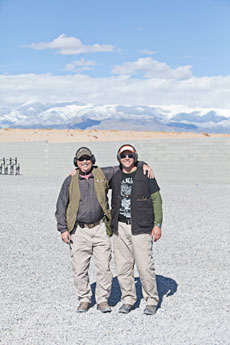
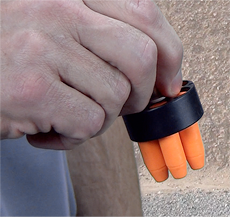
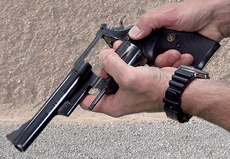
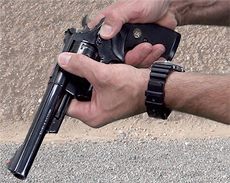
General Comments:
Most students preparing for the Front Sight
4-day pistol course approach the selection
of their firearm as merely decision about
which semi-automatic gun is best for them.
For the most part, students discount or even
completely disregard a revolver as a viable
handgun to bring to class. Ironically, many
semi-automatic enthusiasts still select a
revolver as their bedside gun for its
simplicity and reliability. I think Richard Carlton may have overstated the difficulty of succeeding (graduating and even doing so with distinction) the class with a revolver in his Front Sight Travel Guide. I do agree that you need to become an
accomplished revolver shooter to keep up with the autoloaders, but it can be done.
If someone does want to take a revolver to class, here is what I would add from my
own experience
•
Taking the 4-day class for the first time with an autoloader is probably the
best idea. You may wish to save the revolver for a later attempt. But if you
are really committed to the use of a revolver because of its reliability and
straightforward manual of arms, the FS instructional staff will help you be a
better revolver shooter.
•
Seriously consider an 8-shot revolver. In particular, the Smith and Wesson
627 is a great choice. But I have also taken the FS pistol class with a 6 shot
revolver in .45 ACP, and it went pretty well. If you think about the training
regimen, you really don't need a high cap magazine to keep up with the training relays; but you had better know how to reload!
I would recommend not using a revolver with a barrel length greater than 5
inches. There are many great long barreled revolvers around, but presenting
your gun from concealment under the FS time pressure would be very
challenging with a revolver with a long barrel. My greatest success with a
revolver at FS has been with an 8 shot Smith 627 Snubbie (2.5 inch barrel). It
is more than accurate enough.
Using a small belly gun like a SW J-frame or a Ruger SP101 will be very
challenging. Consider using a full size (L or N frame Smith, for instance)
revolver.
I would strongly recommend the Bladetech holsters, but I would suggest
that you avoid getting one with the drop-offset feature. Presenting a revolver
from a drop-offset holster is tricky. Even with considerable practice, you are
much more likely to hang up on count 3 with the drop offset. Besides, you
would not be using a holster like that for concealed carry, and I seriously
doubt anyone would be successfully with such a holster for concealed carry.
It can be challenging enough to carry a N-frame Smith and Wesson revolver
without making it even more difficult to conceal.
•
I would also suggest a dump pouch for loose rounds or loaded moon clips
and two good speed loader or moon clip holders. There are a number of
choices. You need to do some homework and be familiar with your choice
before showing up to FS. You need a head start on that.
•
Be prepared for using the revolver solely in double action. If you think you
will be able to cock the hammer and take your shots in the lighter single
action, you would be wrong. First, the time pressure for controlled pairs (and
probably the head shots) will make it impossible for you to make the time.
And more importantly, the instructor will expect you to fire the revolver in
double action. However, even with the longer, heavier trigger of a revolver, the FS instructors (and lots of dry practice) will help you gain mastery of the
revolver trigger control.
•
Bring a good cylinder brush and keep the cylinder chambers clean of powder
residue and other crud (It is a dirty environment at FS). At a minimum, scrub
them out each night. If you do not, your reloading of the cylinder (with moon
clips especially) might hang up from the residue buildup by day 4.
•
If you do bring a 357 (like the SW 627) seriously consider using 38 special
for the class. 600-800 rounds of 357 over three days may not be the best
idea. Not only that, but you will be increasing your ammo cost at least 50%
with 357. And your neighbors on the line will get tired of you eventually.
•
In my humble opinion, reloading absolutely requires speed loaders or moon
clips. You will have a miserable time reloading with loose rounds or even a
speed strip. I personally use moon clips in both 6-shot and 8-shot revolvers.
With practice, you can do emergency and tactical reloads within the FS time
constraints just as you can do so with magazines in autoloaders. But it is
obviously harder to make those times with a speedloader. Having said that
the FS emergency reload skills test time is something like 8 seconds.
•
If you plan on running a revolver using moon clips, make sure you make
it an objective to know whether loading the moon clips from the strong or
weak side is best for you. If you haven't already figured that out, this will
be one good thing to figure out from the class. There are advantages and
disadvantages to both. I have seen some blistering fast reloads from Master
Competitive shooters using the weak side reload. But the best revolver
shooter in the world (Jerry Miculek) loads with his strong side hand. The FS
instructors can help you sort this out, but you should make it a point to seek
that advice.
•
One advantage of the revolver is that you do not have the malfunction issue
inherent in the autoloader's operation. The malfunction portion of the
skills test will be very boring for you. While the other students are locking,
stripping, racking, racking, racking, inserting, and racking their way through
a type 3 malfunction, you will be standing there counting daisies (actually
there aren't any daisies at FS; you will have to count rocks). The only exercise
you have to complete on the malfunctions and reloading portion of the skills
test is the emergency reload, and that time (8 seconds, I believe) assumes
you will be using a speed loader.
I have taken the FS 4-day class, 2-day skill builder, and tactical scenarios classes. In
fact, I have repeated these classes a number of times. But all in all, the most fun (and
the most challenge) I had was while taking two of those classes using a revolver. I
learned a lot, and the pressure of the skills test helped me really understand what
more I needed to work on. The instructors were great, and although I received some good-natured kidding about bringing a wheelgun, they were happy to have a
revolver shooter in the class. And I was happy that I did.
For returning students, I would definitely urge you to consider taking the pistol
class with a revolver. Especially if you have achieved some level of competence in
the class, consider using a recurring class to try something different. Your training
time is valuable, and if you have reached a point where you can DG the pistol class
with an autoloader, you might get more out of your next training class exploring a
different system and a different set of gun handling techniques. Oh yeah, you won't
have ANY type 3 malfunctions to worry about.